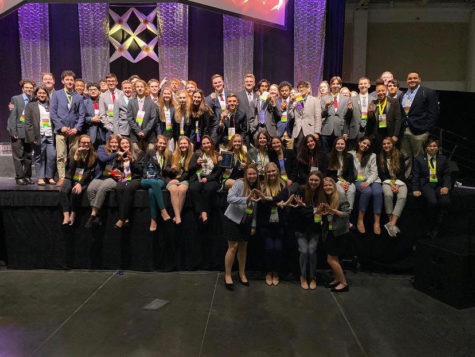After High School
After high school, there are plenty of different pathways for students to branch out into. According to Education Week, 79% of people go to college by the time they’re twenty. Although that’s a promising and highly promoted pathway for today’s young adults to pursue, it’s important to note that it’s not the only option out there.
In 2015, the Associated Press found that the average student debt starts at $35,000. As far as loan co-signers (relatives/legal guardians) go, the average cost is $30,867. As a nation, the debt calculated all together is in the billions, and still growing. This number includes both federal and private education loans.
After being given a little background, it’s easy to see why students aren’t immediately attending college. The Huffington Post explained that now 12% of students are dropping out of college. Reasons for this could be financially biased, but there are also countless causes for this trend. Some of the reasons for not going to college may include performance in high school, which may prevent them from going their college of choice. Other reasons include that their life goals may not pertain to a collegiate experience, or the type of training for their aspirations doesn’t require a college degree. One of the most common reasons, however, is that a student does not know what they want to do right after high school.
What influences students now, is a lot more than being able to get a job. It’s not that difficult to get basic employment for high school students; it’s also not impossible to be employed without a degree. Georgetown University published a magazine after they conducted their own research about what the job-market will look like in the near future. One of the important facts mentioned was that, “by 2020, 65 percent of all jobs in the economy will require postsecondary education and training beyond high school.” 65% isn’t a lot, not compared to 2010’s research confirming that 59% of jobs required higher education. That still leaves a percentage rate of jobs open to high school graduates or for people who never completed high school.
In today’s market the best places to look for work are job-markets with free or even on-the-job training. An electrician is one of the top professions for those who do not consider college to be a feasible plan. It’s an adaptable skill, both from at home experiences and previous employment. This job does not always require previous education. In fact, many high schools offer classes that implicate the necessary talents the field would initially require. A similar job includes machinists; almost 59% of those who work in this field haven’t attended college. After acquiring experience in these fields, a related career with relatively decent pay would be engineering. The only trouble is, the best engineers usually have had academic training.
When looking at the numbers though, there are better options out there for those who aren’t turned on by any of the previous options. The top three would have to be working as a secretary or assistant, being an at-home-health-aid, or becoming a mechanic. As far as “growth” over the years resonates, the careers above can allow anyone to gain experience the longer that they work. Experience can get a person a better job, even in a different field. Assistants and secretaries can rise up in companies that they work for. This diversifies a person’s history of employment, and intensifies their knowledge in the progressing technological age.
Now there are many other careers that students can get into without college. They could also be classified as the ones that consumers look over, but also really need. Some to mention are bus drivers, beauticians, and food service managers. These sorts of jobs do typically require both experience and strong recommendation backgrounds. How a person conducts themselves, treats people, and follows through with professional business ultimately decides whether they make it or break it in the businesses. After all, each of these career options has one thing in common. There’s always another person who knows how to do what the other person does. Hard work is what it takes.



